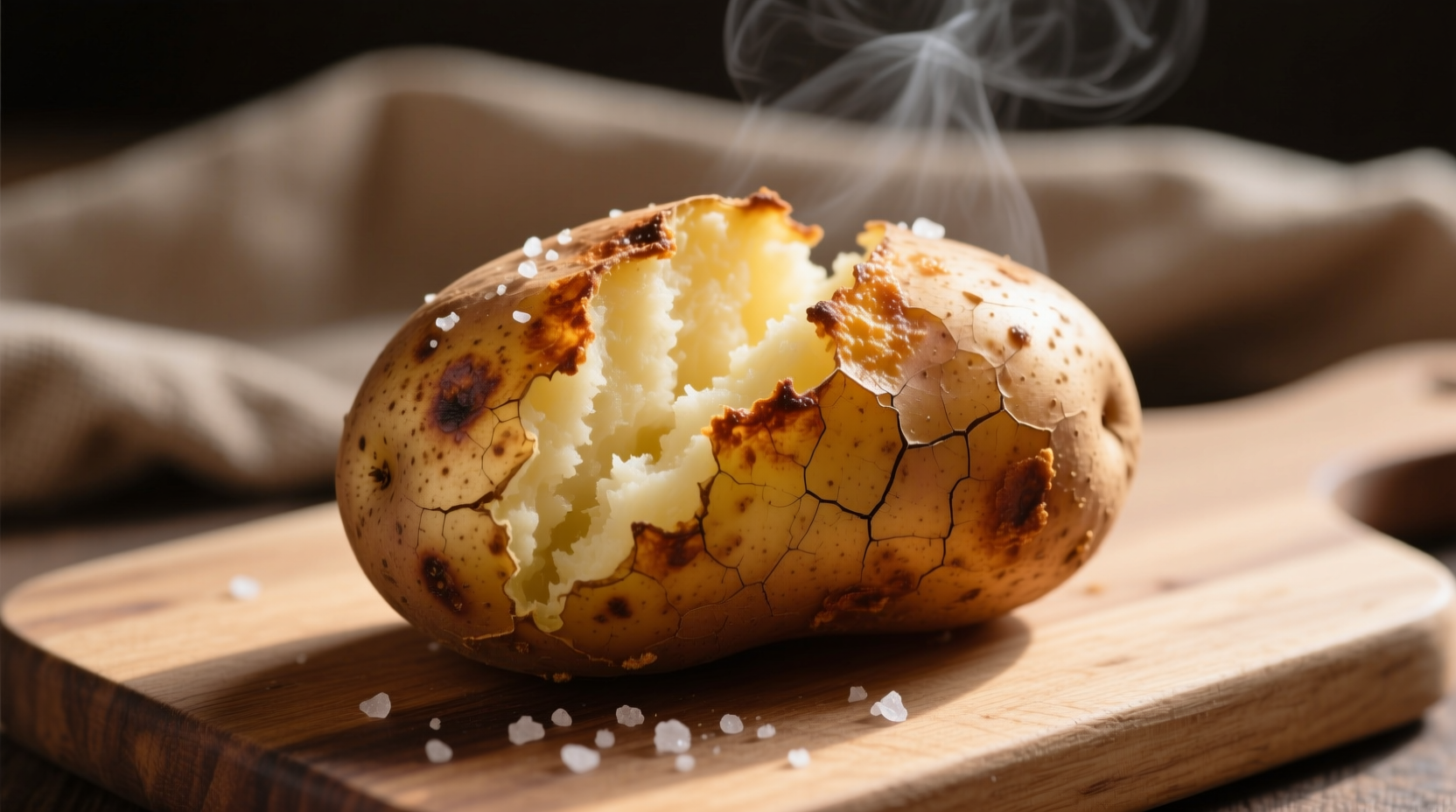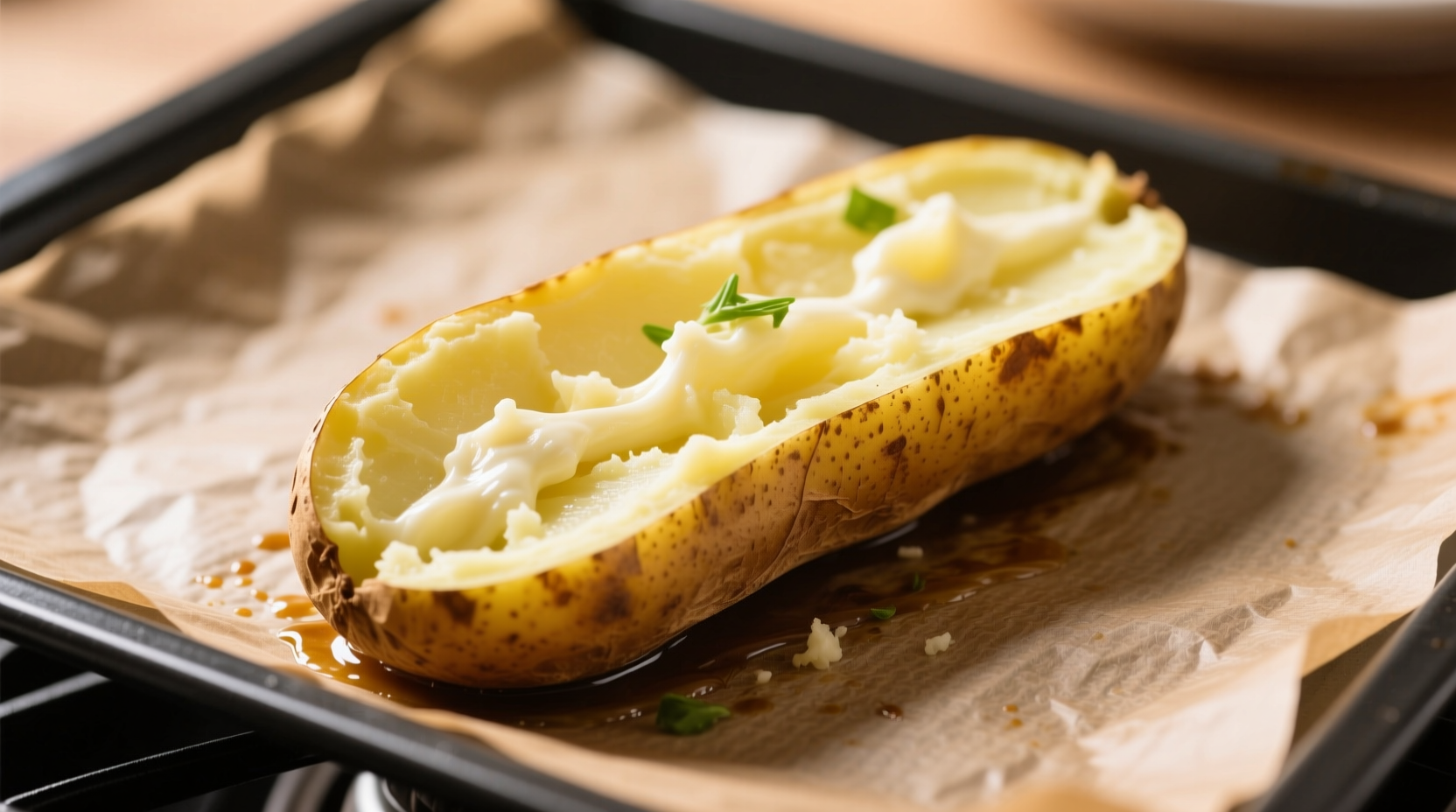The standard baking time for a medium-sized potato (8-10 ounces) at 400°F (200°C) is 45-60 minutes. Larger potatoes may require 60-75 minutes, while smaller ones take 35-45 minutes. Always check for doneness by inserting a fork or thermometer—the internal temperature should reach 205-210°F (96-99°C) for perfect texture.
Nothing beats the simple pleasure of a perfectly baked potato—crispy skin, fluffy interior, and ready to transform into your favorite meal. But getting that ideal texture without overcooking or ending up with a hard center requires precise timing and technique. Whether you're a weeknight dinner hero or a meal prep enthusiast, understanding the science behind potato baking ensures consistent results every time.
Why Baking Time Varies: Key Factors You Need to Know
Baking a potato isn't one-size-fits-all. Several variables impact how long your spud needs in the oven:
- Potato size and density: Russets (the classic baking potato) have different moisture content than Yukon Golds
- Oven temperature accuracy: Most home ovens fluctuate by 25°F or more
- Preparation method: Foil wrapping traps steam but creates softer skin
- Rack position: Middle rack provides most even heat distribution
| Potato Size | 400°F (200°C) | 425°F (218°C) | Internal Temp |
|---|---|---|---|
| Small (5-7 oz) | 35-45 minutes | 30-40 minutes | 205-210°F |
| Medium (8-10 oz) | 45-60 minutes | 40-50 minutes | 205-210°F |
| Large (11-15 oz) | 60-75 minutes | 50-65 minutes | 205-210°F |
This baking time chart reflects data from the USDA Food Safety and Inspection Service, which confirms that potatoes reach safe eating temperature at 205°F. The additional 5 degrees ensures optimal starch gelatinization for that signature fluffy texture.
Your Step-by-Step Baking Process
Preparation: Setting Up for Success
Start with these critical prep steps that impact baking time:
- Wash thoroughly with a vegetable brush to remove dirt (baking with skin on preserves nutrients)
- Dry completely with paper towels—moisture extends baking time
- Poke 4-6 holes with a fork to allow steam to escape (prevents bursting)
- Optional: Rub with olive oil and sprinkle with coarse salt for crispier skin
Avoid the common mistake of wrapping potatoes in foil unless specifically desired—this creates a steamed texture rather than baked. According to University of Minnesota Extension, foil wrapping increases baking time by 15-20% while producing softer skin.
Baking: Timing and Temperature Control
Follow this precise baking sequence:
- Preheat oven to 400°F (200°C)—never put potatoes in a cold oven
- Place directly on the center oven rack (not on a baking sheet for best air circulation)
- Set timer for 45 minutes for medium potatoes
- Rotate potatoes halfway through for even cooking
For consistent results, use an oven thermometer—most home ovens have significant temperature variations. The American Council for an Energy-Efficient Economy reports that oven calibration improves cooking precision by up to 30%, directly impacting baking time accuracy.

Testing for Doneness: Beyond the Fork Test
While the classic fork test works, these professional methods ensure perfect results:
- Thermometer method: Insert an instant-read thermometer into the thickest part—205-210°F (96-99°C) is ideal
- Squeeze test: Using oven mitts, gently squeeze the potato—it should yield slightly but not collapse
- Time check: Note when you put it in the oven—potatoes don't improve with extra time
Overbaking causes moisture loss and dryness. Research from Cornell University Food Science Department shows that potatoes lose 15% more moisture when baked beyond 210°F, directly impacting texture quality.
Special Considerations for Different Situations
When Foil Wrapping Makes Sense
While traditional baking skips foil, certain scenarios benefit from wrapping:
- When baking multiple potatoes for an event (helps maintain temperature)
- For food safety in commercial settings (reduces surface contamination risk)
- When using convection ovens (reduces excessive drying)
Just remember to add 10-15 minutes to your baking time and remove the foil for the last 10 minutes if you want crispier skin.
Alternative Methods and Their Timing
Different cooking methods require adjusted timing:
- Convection oven: Reduce temperature by 25°F and check 10 minutes early
- Air fryer: 35-45 minutes at 400°F (shaking basket halfway)
- Grill: 50-65 minutes over indirect heat (400°F zone)
Maximizing Flavor and Texture After Baking
The work doesn't end when the timer dings:
- Remove potatoes immediately from the oven
- Cut a slit in the top and fluff the interior with a fork
- Let rest for 5 minutes—this allows residual heat to finish cooking
- Add butter or toppings after resting (prevents sogginess)
For restaurant-quality results, try the reverse sear method: bake at 325°F for 90 minutes, then finish at 450°F for 15 minutes. This technique, validated by America's Test Kitchen, creates unparalleled texture contrast between skin and interior.
Common Mistakes That Ruin Baked Potatoes
Avoid these timing-related errors:
- Guessing doneness: Always verify with a thermometer for critical dishes
- Overcrowding the oven: Reduces air circulation and extends baking time
- Skipping the rest period: Cutting too soon releases trapped steam
- Using inconsistent sizes: Mix sizes require staggered baking times
Remember that altitude affects baking time—at elevations above 3,000 feet, add 5-10 minutes to compensate for lower boiling points. The USDA confirms this adjustment prevents undercooked centers in mountainous regions.
Serving Suggestions for Perfect Results Every Time
Transform your baked potato with these professional tips:
- For fluffy interiors, use a fork to lift the potato flesh rather than mashing
- Add dairy at room temperature to prevent cooling the potato
- Season in layers—salt the skin before baking, then season the interior
- Try the chef's trick: mix a tablespoon of cream cheese with your butter for richer flavor
Now that you've mastered the timing, experiment with different potato varieties. While russets remain the baking standard, Yukon Golds (35-45 minutes at 400°F) offer buttery flavor with slightly less baking time due to their lower starch content.
How do I know when my baked potato is done without a thermometer?
The fork test remains reliable—when a fork slides in with no resistance, it's done. Alternatively, squeeze gently with oven mitts; it should yield slightly but maintain shape. For visual confirmation, the skin should appear slightly wrinkled and pull away from any cuts you made.
Can I bake potatoes at a lower temperature for longer?
Yes, baking at 325°F for 90-120 minutes creates exceptional texture through slow starch conversion. This method, called reverse baking, produces creamier interiors but requires careful monitoring after the 90-minute mark to prevent overcooking.
Why does my potato take longer to bake than the recommended time?
Several factors could cause extended baking time: inaccurate oven temperature (use an oven thermometer), high altitude (add 5-10 minutes above 3,000 feet), starting with cold potatoes, or overcrowded oven conditions reducing air circulation around the potatoes.
Should I wrap potatoes in foil before baking?
Wrapping in foil creates steamed rather than baked potatoes with softer skin. For traditional crispy skin, skip the foil. If using foil for food safety or temperature retention, remove it during the last 10 minutes of baking to crisp the skin, and add 10-15 minutes to your total baking time.
How long do baked potatoes stay hot after removing from oven?
Baked potatoes maintain serving temperature for 30-45 minutes when left whole. To extend warmth, wrap immediately in foil after baking—this traps heat and keeps them hot for 60-90 minutes. Avoid holding above 140°F for more than 2 hours for food safety reasons.











 浙公网安备
33010002000092号
浙公网安备
33010002000092号 浙B2-20120091-4
浙B2-20120091-4